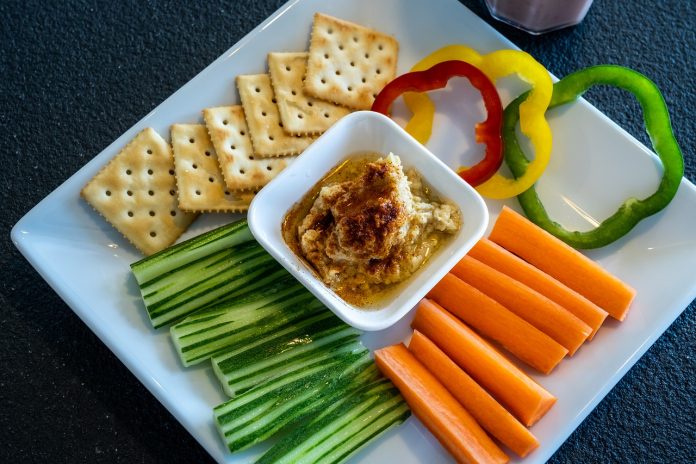By Tracy Turner | Ohio State Chow Line
“My little boy is at the age where he has decided he does not like to eat vegetables. As a parent, how can I instill better eating habits in my child?”
While it’s normal for young children to be picky eaters, there are ways that you can help them develop healthier eating habits. One easy way is through modeling healthy eating habits yourself. One of the most common ways that children learn new things is by watching and imitating parents’ actions.
In fact, research has shown that parents’ eating choices can have a major influence on their children, said Ingrid Adams, state specialist in food, health, and human behavior for Ohio State University Extension. OSU Extension is the outreach arm of the College of Food, Agricultural, and Environmental Sciences at The Ohio State University.
Studies have found that parental modeling of healthy food choices has been positively associated with those same parents’ children’s consumption of fruits and vegetables. And children whose parents modeled healthy eating behaviors were more likely to meet their recommended daily intake of fruits and vegetables, Adams said.
“By modeling unhealthy eating behaviors, parents may increase the likelihood of their children being overweight or obese, putting them at greater risk for chronic diseases that can affect their health now and in the future,” she said in Modeling at Mealtime, a recent Ohioline fact sheet. Ohioline is OSU Extension’s free online information resource and can be found at ohioline.osu.edu.
Modeling healthy eating habits
Adams offers these helpful tips for parents to model healthy eating habits in children:
- Be willing to try new and healthy food options yourself. Offer new foods without forcing or bribing your child to eat them.
- Show your kids how to make healthy choices during meals and snack times by choosing nutritious foods—and avoiding “junk foods”—yourself.
- Choose fruits and vegetables as snacks in place of chips and candies, and replace sodas and other sugary, sweetened drinks with water. In other words, make water your drink of choice.
- Make meals nutrient dense by including foods from each of the five good groups: vegetables, fruits, whole grains, lean protein, and dairy.
- Take kids with you when you go grocery shopping. Show them how to choose fresh produce, compare nutrition labels on foods, and how to shop on a budget. This can help them understand where their food comes from, how to make healthy choices, and how to use money wisely.
“Planning and making healthy meals with your children is another way to teach healthy eating habits. It is also a great way for children to learn about nutrition and food safety, and develop cooking skills and creativity,” Adams said. “Encourage creativity by having children create a new menu item from a list of ingredients you picked out together.”
Chow Line is a service of the College of Food, Agricultural, and Environmental Sciences and its outreach and research arms, OSU Extension and the Ohio Agricultural Research and Development Center. Send questions to Chow Line, c/o Tracy Turner, 364 W. Lane Ave., Suite B120, Columbus, OH 43201, or turner.490@osu.edu.

















I appreciate your tip on choosing fruits and vegetables as snacks. My 2-year-old daughter is always saying how she doesn’t like fruits and veggies and I wasn’t sure what to do. I’ll make sure to keep this in mind while I try to teach her healthy eating habits.